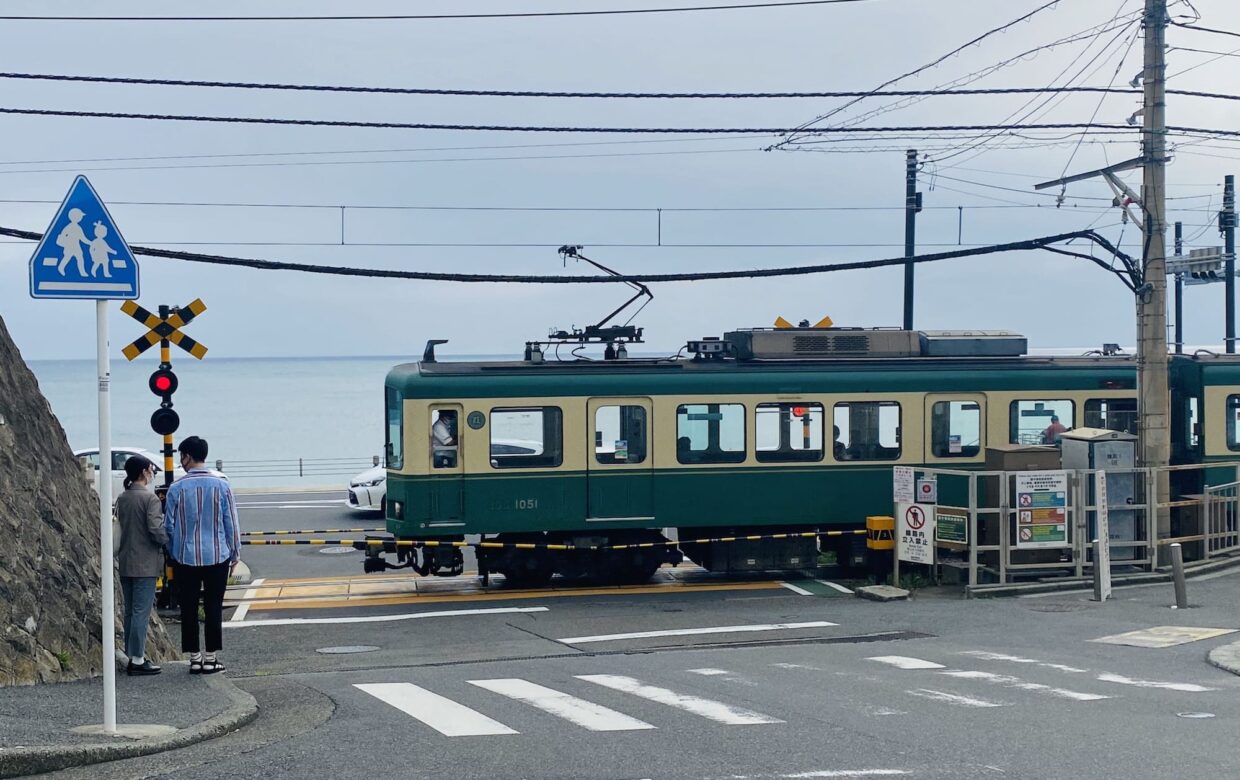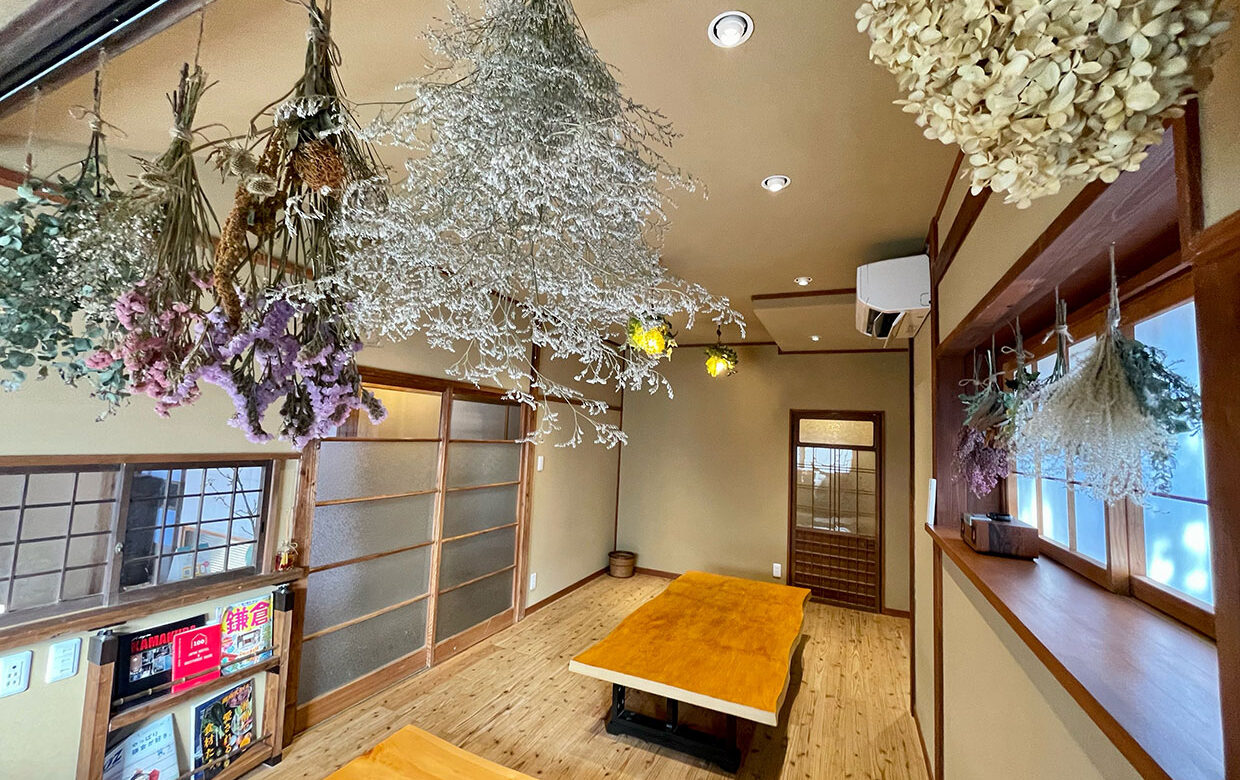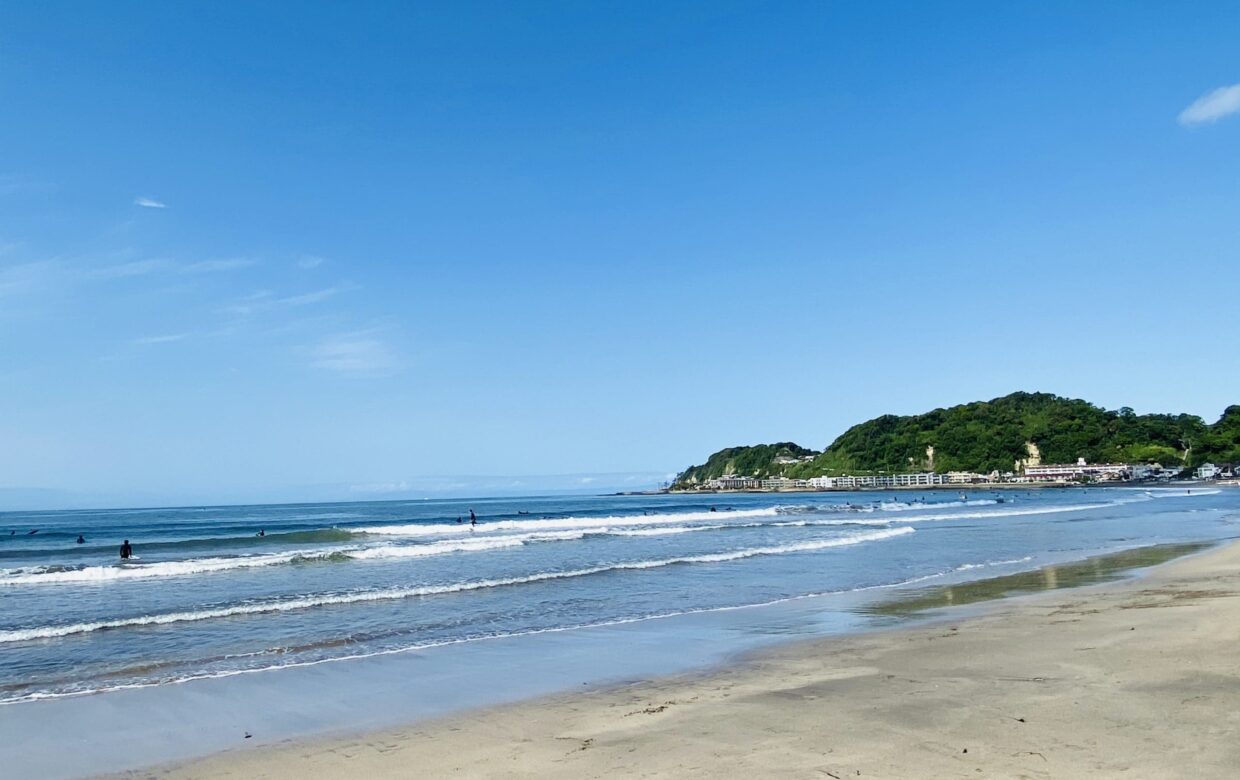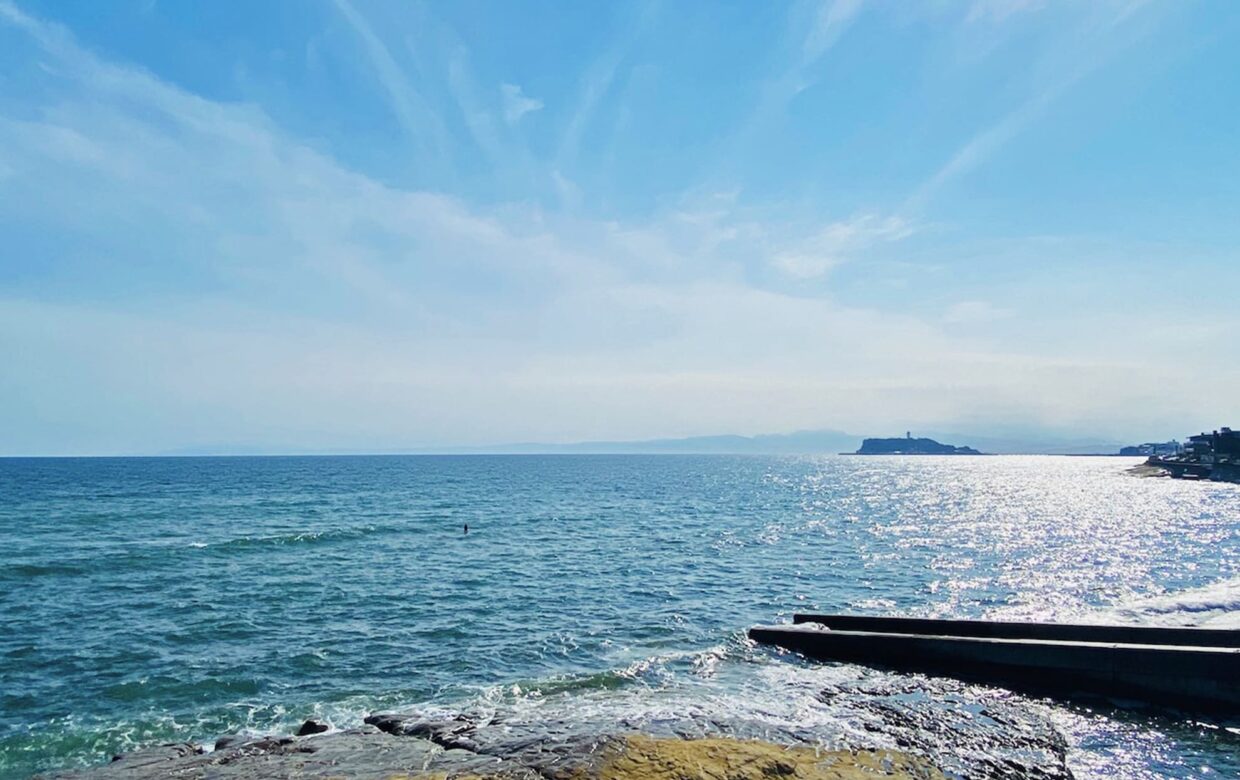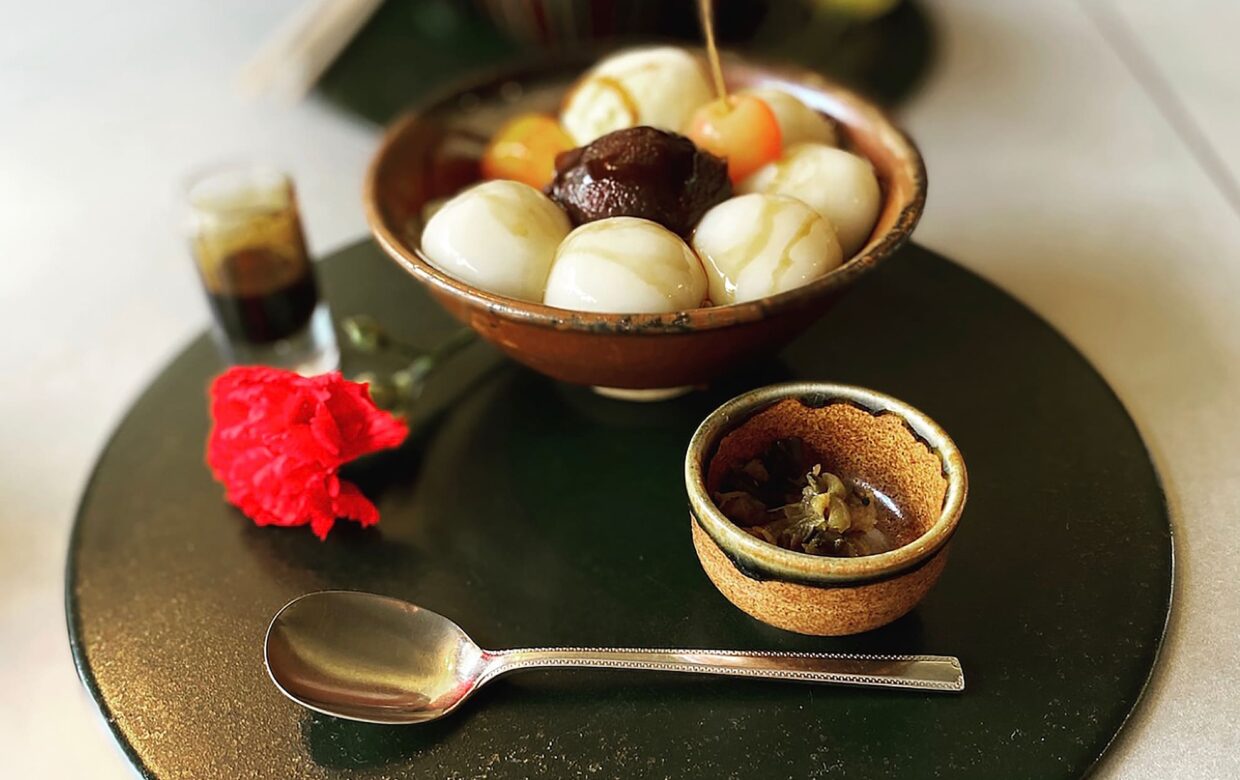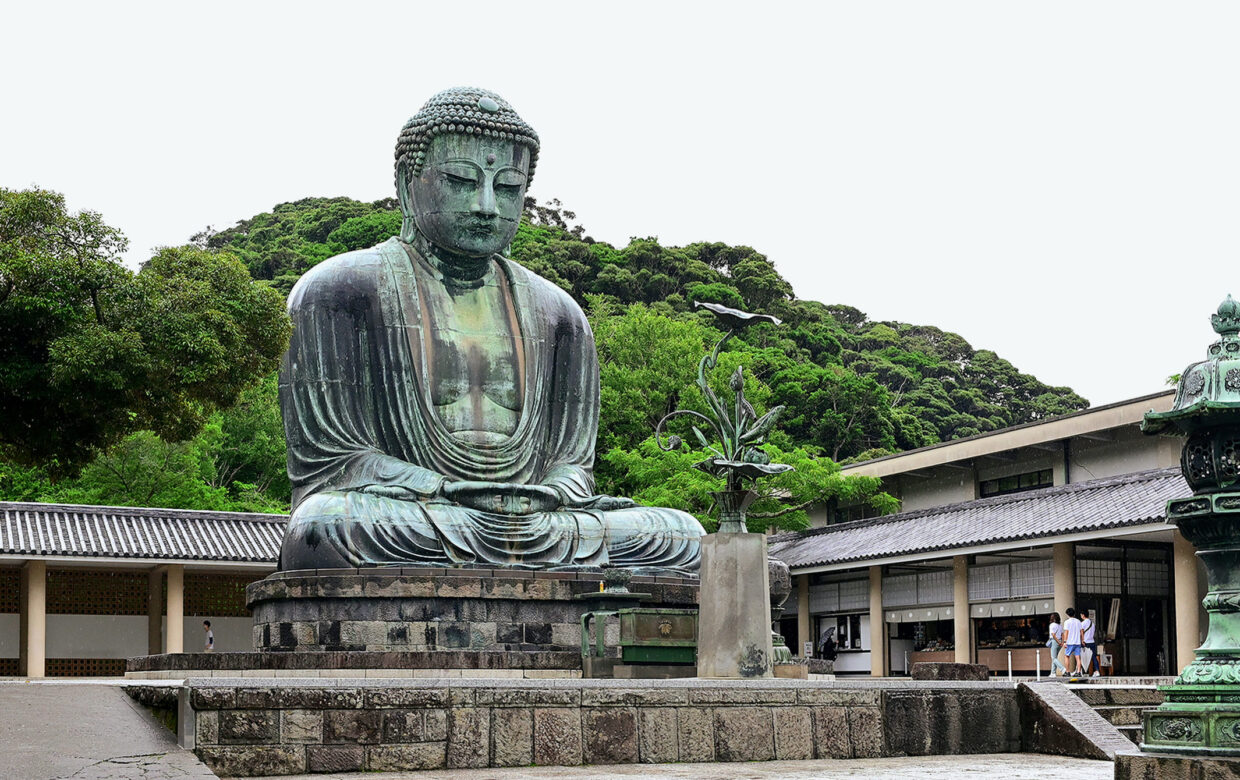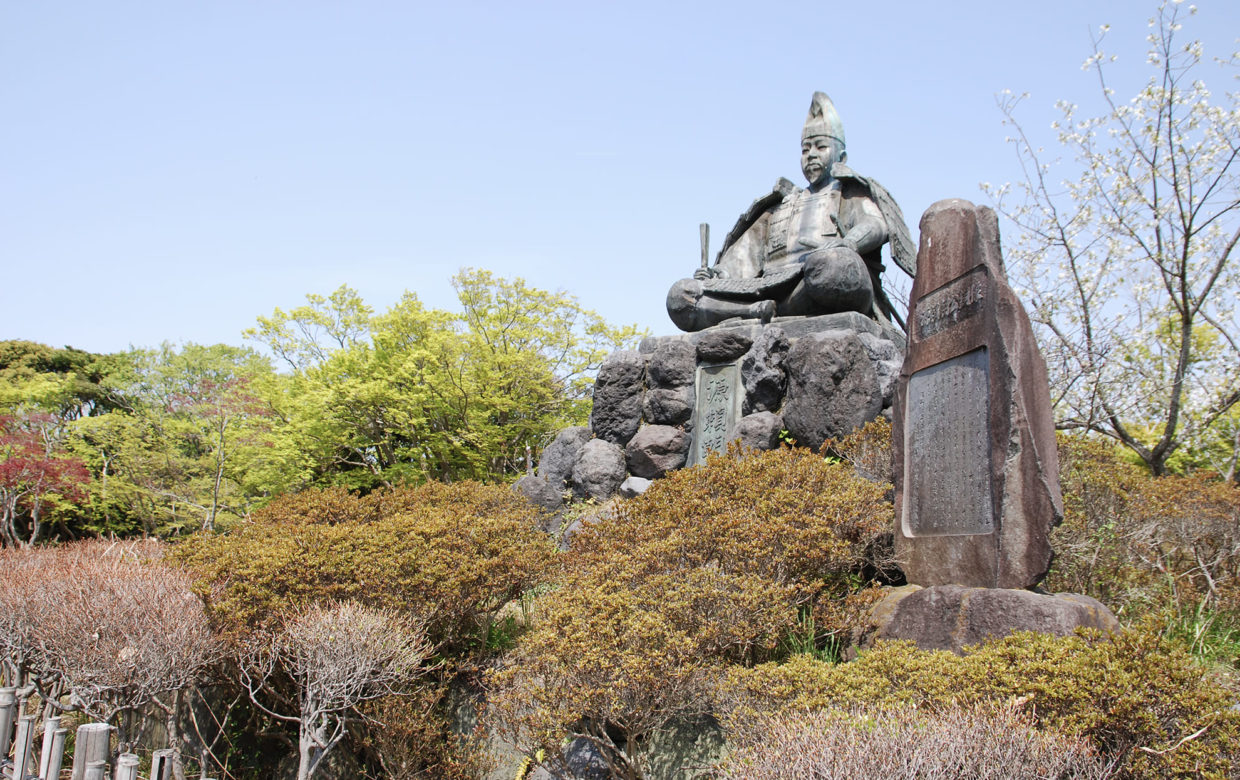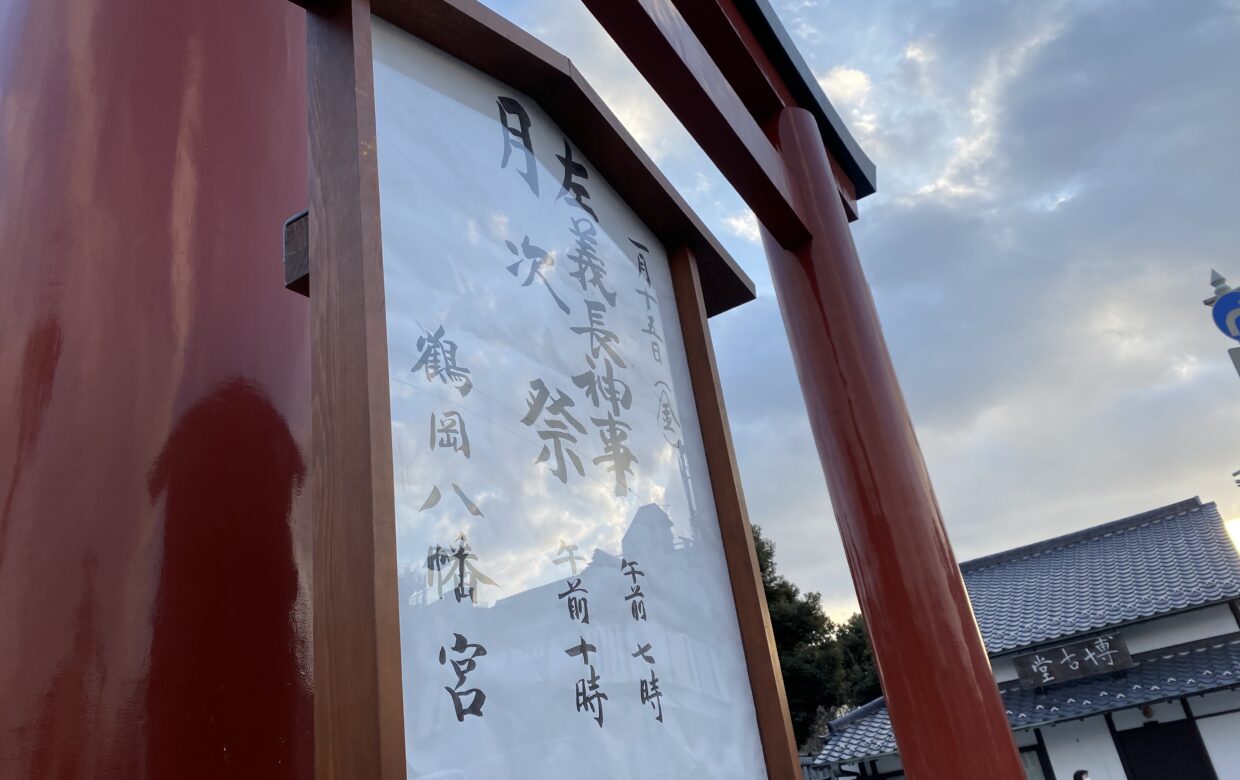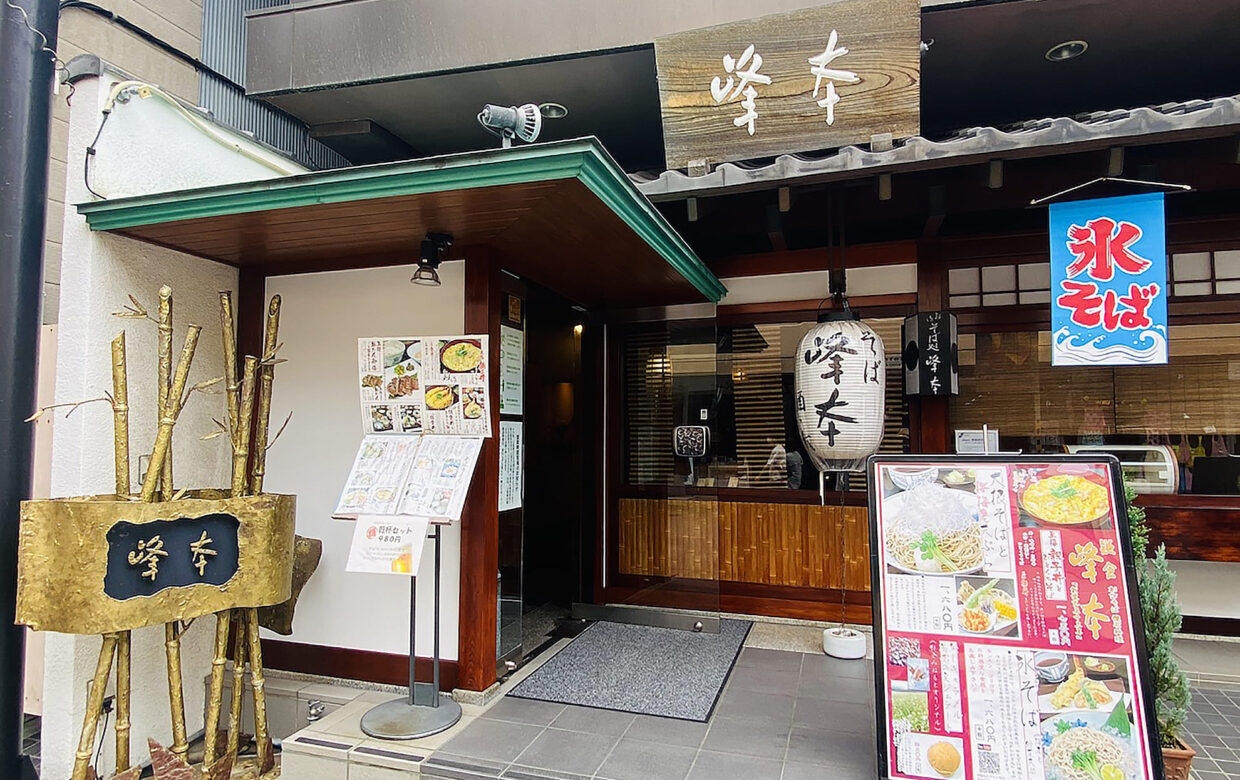Kamakura’s Seven Entrances – Nagoe Pass: Experience Medieval Kamakura with Your Five Senses
Historical Remains: The Kiridoshi
Kamakura, with the sea to the south and closed off on the remaining sides by mountains, was said to be a natural fortress against enemy invasions. In the first half of the 13th century when the Hojo clan’s influence was being established, Kamakura flourished as a hub of political and economic activity. However, with the foot traffic and the exchange of goods becoming more frequent, that “natural fortress” became a hindrance to those who often journeyed to and from Kamakura.
To allow passage to be more accessible for both people and horses, the surrounding mountains and hills were excavated to put in a path called Kiridoshi (切通し lit. Pass). Many of these passes still exist in the areas surrounding Kamakura today. Among these are the main passes called the Kamakura Seven Entrances (鎌倉七口 kamakura nanaguchi): Nagoe Pass, Asaina Pass, Kobukurozaka Pass, Kamegayatsu Pass, Kewaizaka Pass, Daibutsu Pass and Gokuraku Pass.
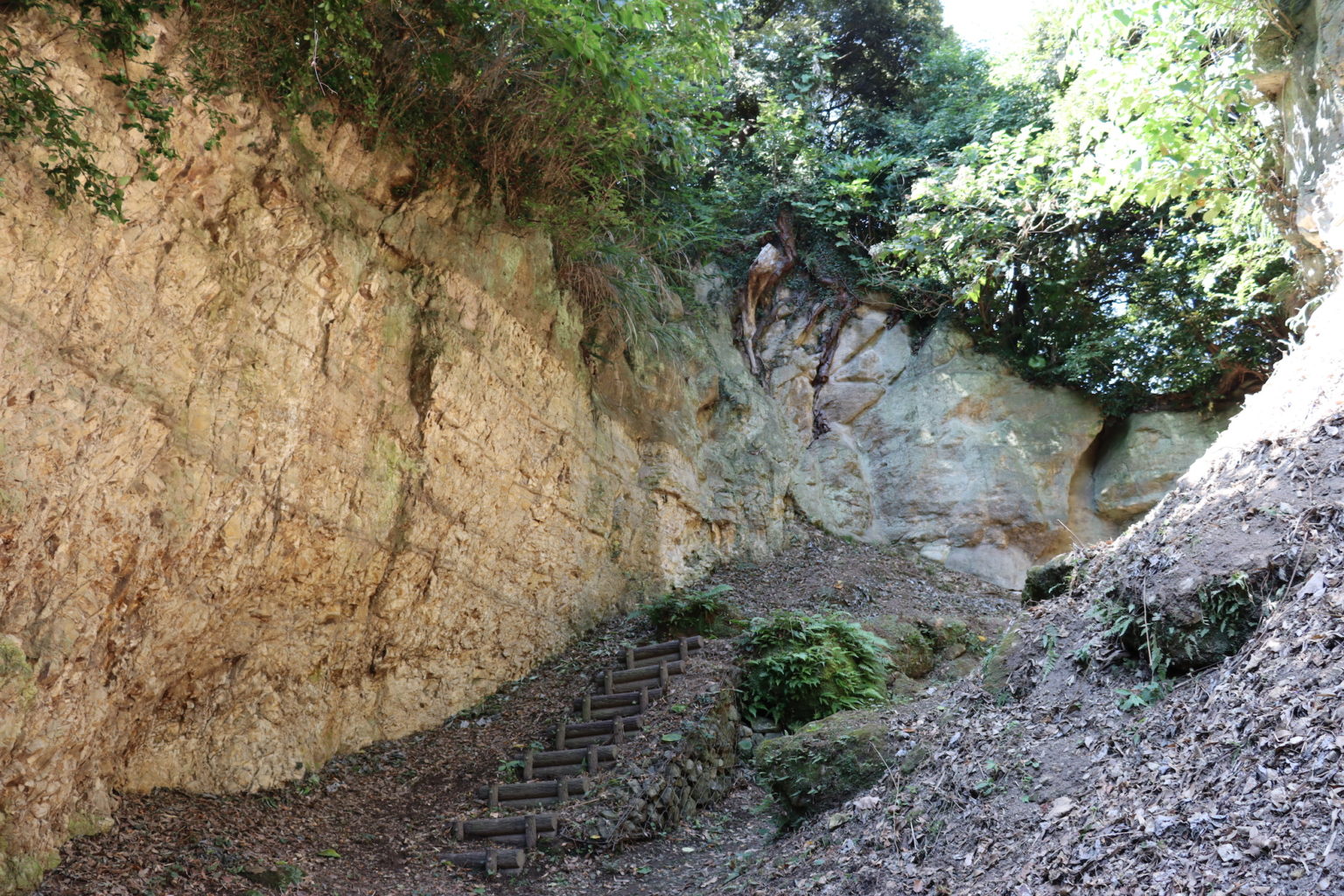
These passes functioned not only as roads but also as economically and militaristically significant places.
Despite the fall of the Kamakura shogunate, the Kamakura Seven Entrances underwent repeated repairs while being used as transportation routes from the Edo Period up until the operation of the Yokosuka Line in the Meiji Period.
This article will introduce Nagoe Pass, which still retains the atmosphere of the ancient road, from among the historical remains of Kamakura’s Seven Entrances.
Nagoe Pass: The Main Road Connecting Kamakura to Miura Peninsula
Nagoe Pass is one of the crucial roads that connects Kamakura to the Miura Peninsula This road, made in the Kamakura Period by excavating the mountain range, was written down as an achievement for the Kamakura Shogunate in the Azuma Kagami, a text which contains the events of the Kamakura Shogunate. The Azuma Kagami Chapter Tenpuku Gannen August 18th, 1233 CE is the first time Nagoe Pass appears in historical records. Nagoe Pass was used as a highway continuously for many years until tunnels for Prefectural Roads and the Yokosuka Line, which passes directly under Nagoe Pass, opened in the Meiji Period.

Much of the original Kamakura Period landscape has disappeared due to repeated reconstructions. However, with the existence of flat grounds and man-made cliffs, both of which are thought to be related to Kamakura’s defense, as well as yagura cave temples around Nagoe Pass, the historical scene of Medieval Kamakura still remains today. In Showa 41 (1966 CE), Nagoe Pass was registered as a nationally designated landmark.
Visting a Temple on the way to Nagoe…
Access to Nagoe Kiridoshi Pass takes about 30 minutes on foot from either JR Kamakura Station or Zushi Station. This time, I will start from Zushi Station, the next station over from Kamakura Station. Exiting from Zushi Station East Gate and keeping the roundabout on my right side, I go straight on Nagisa-dori Avenue and turn right on Ikeda Street. I turn left when I reach Kanagawa Prefectural Road 205 ([県道205号線] kendou 205 gousen) and continue following the train tracks.
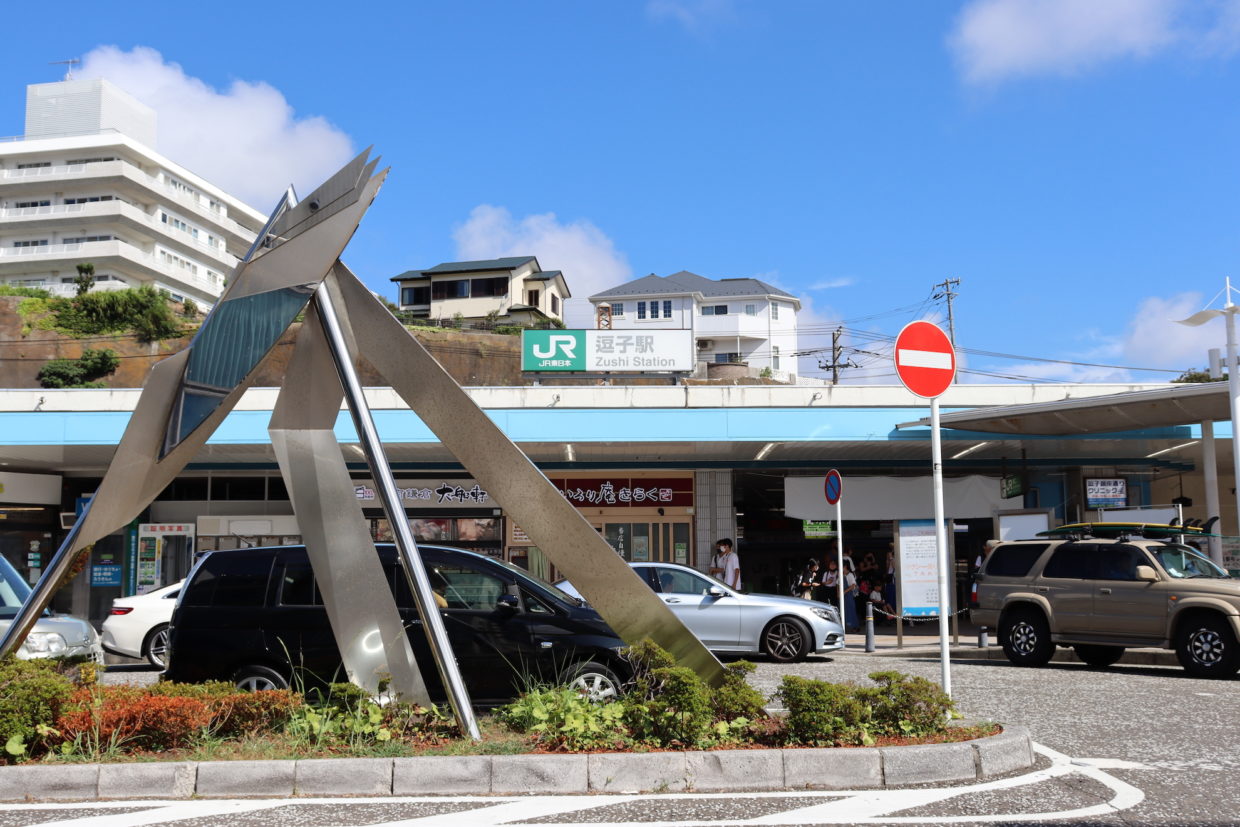
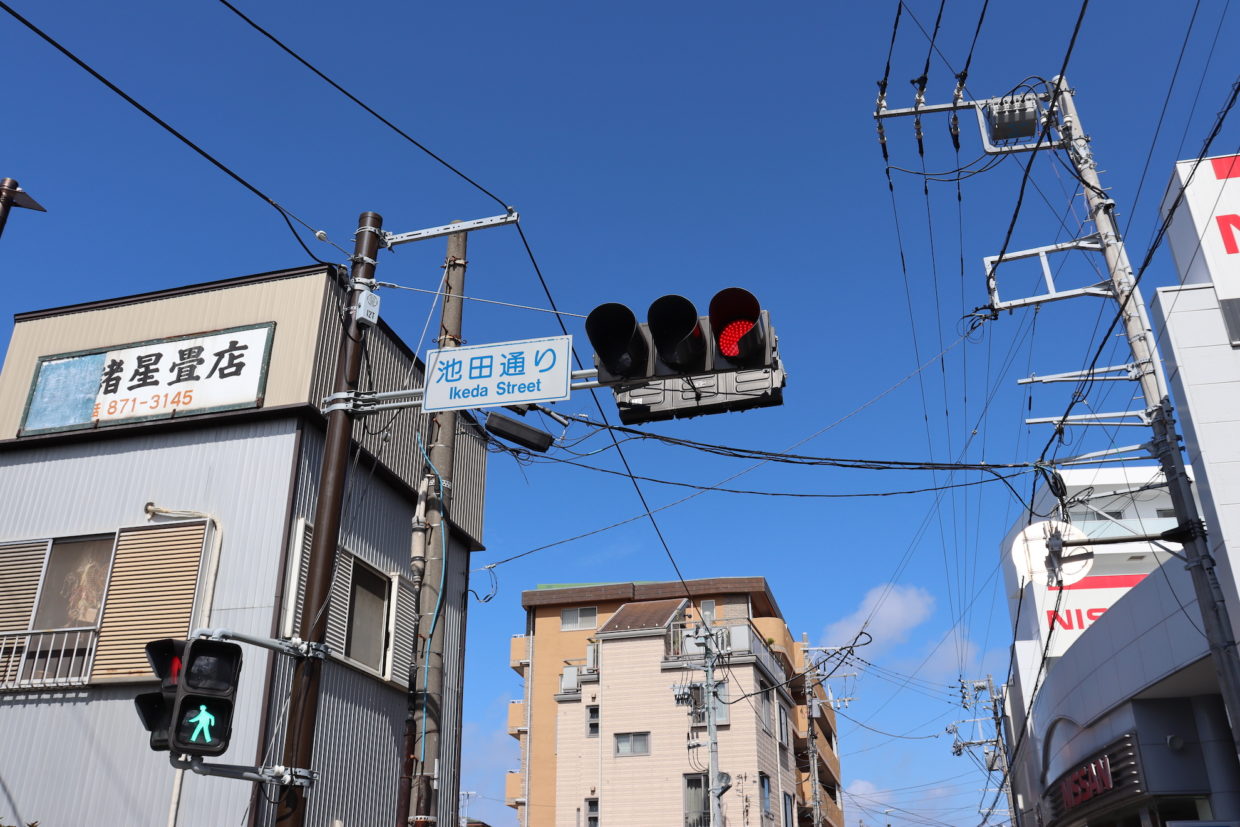
After a while I come across a sign on the right-hand side that says Ganden-ji Temple ([岩殿寺] ganden-ji) so I went to have a look.
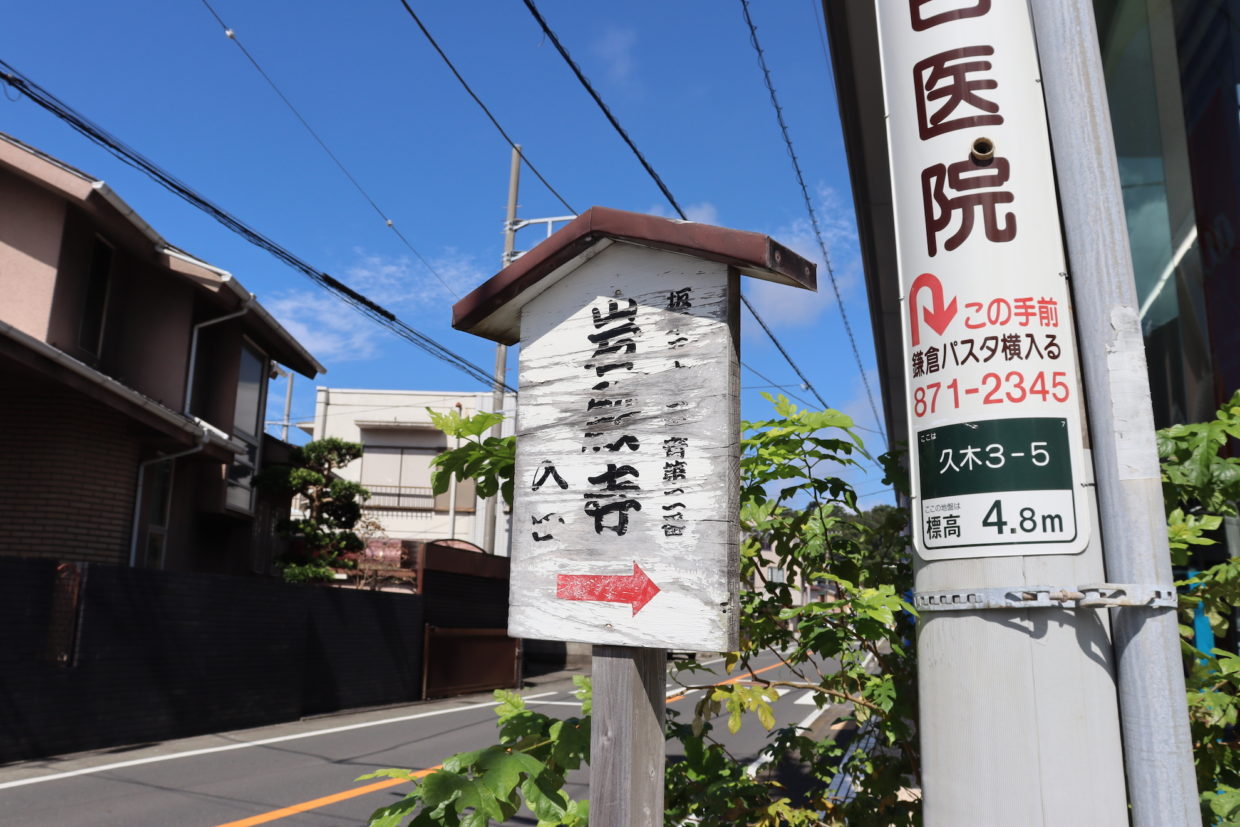
Ganden-ji Temple, the 2nd temple in the Bando 33 Kannon Pilgrimage, is an ancient temple that is said to been founded by Gyoki in the Yoro Era (717-724). In the Kamakura Period, shogun families had a lot of faith in religion, and it was written in the Azuma Kagami that Minamoto no Yoritomo, Masako Hojo, and Minamoto no Sanetomo underwent this pilgrimage.
In the Meiji Period there was a writer, Kyoka Izumi, who often visited the Ganden-ji temple and used it as a setting for some of his works such as One Day in Spring ([春昼]・[春昼後刻] Shunchu/ Shunchu gokoku).
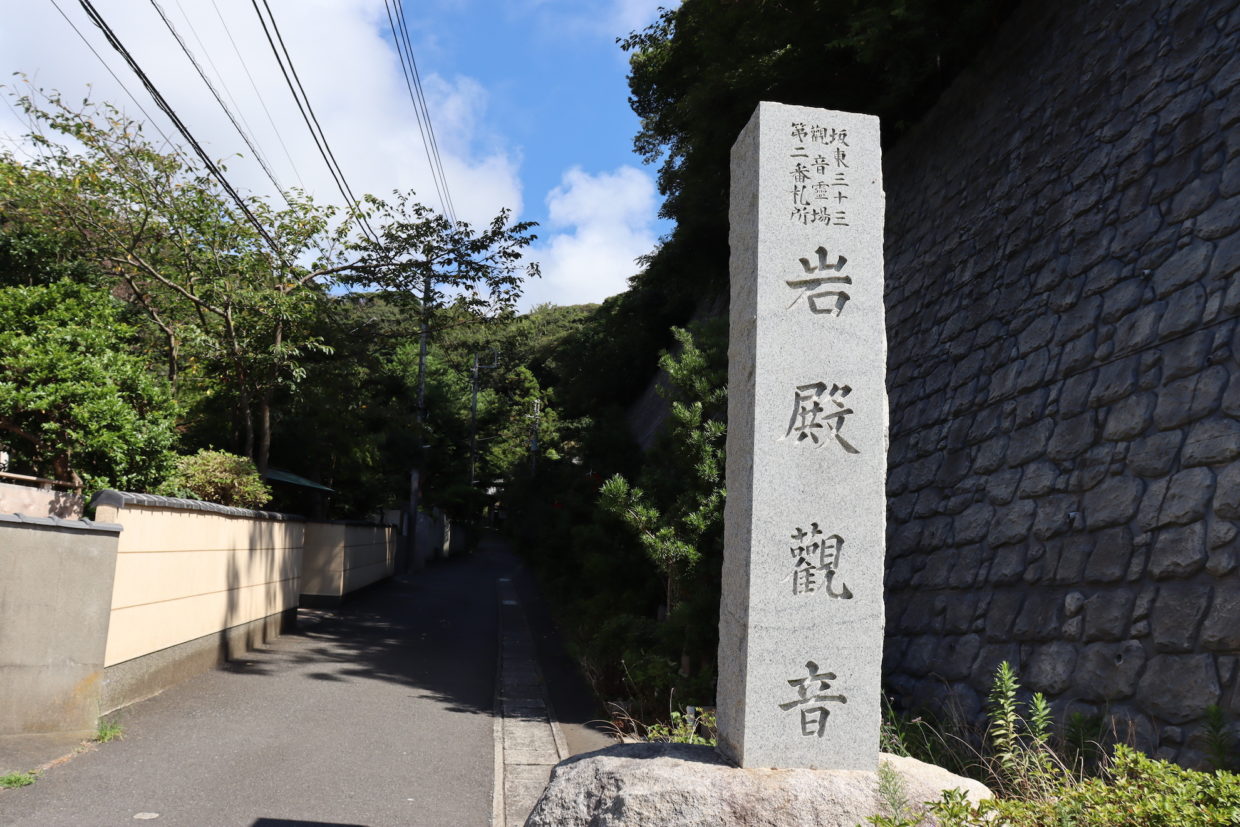
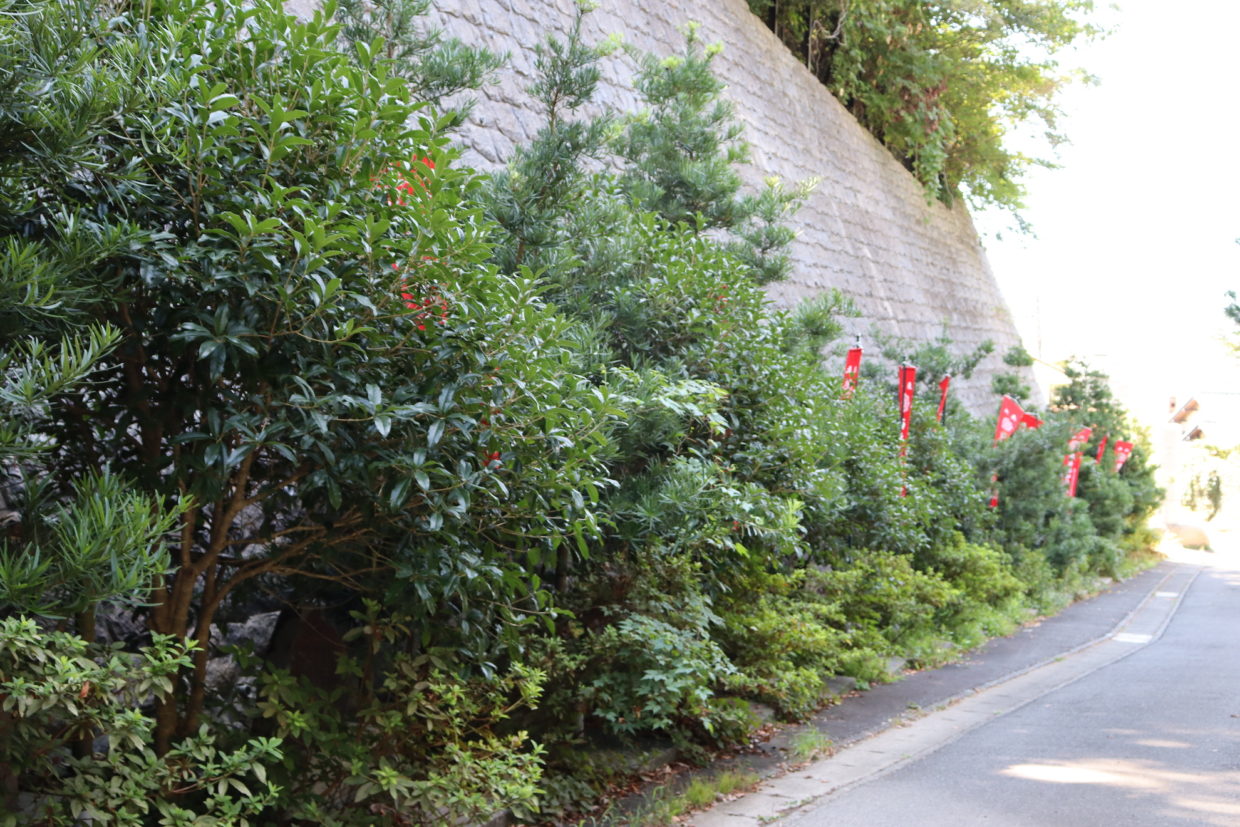
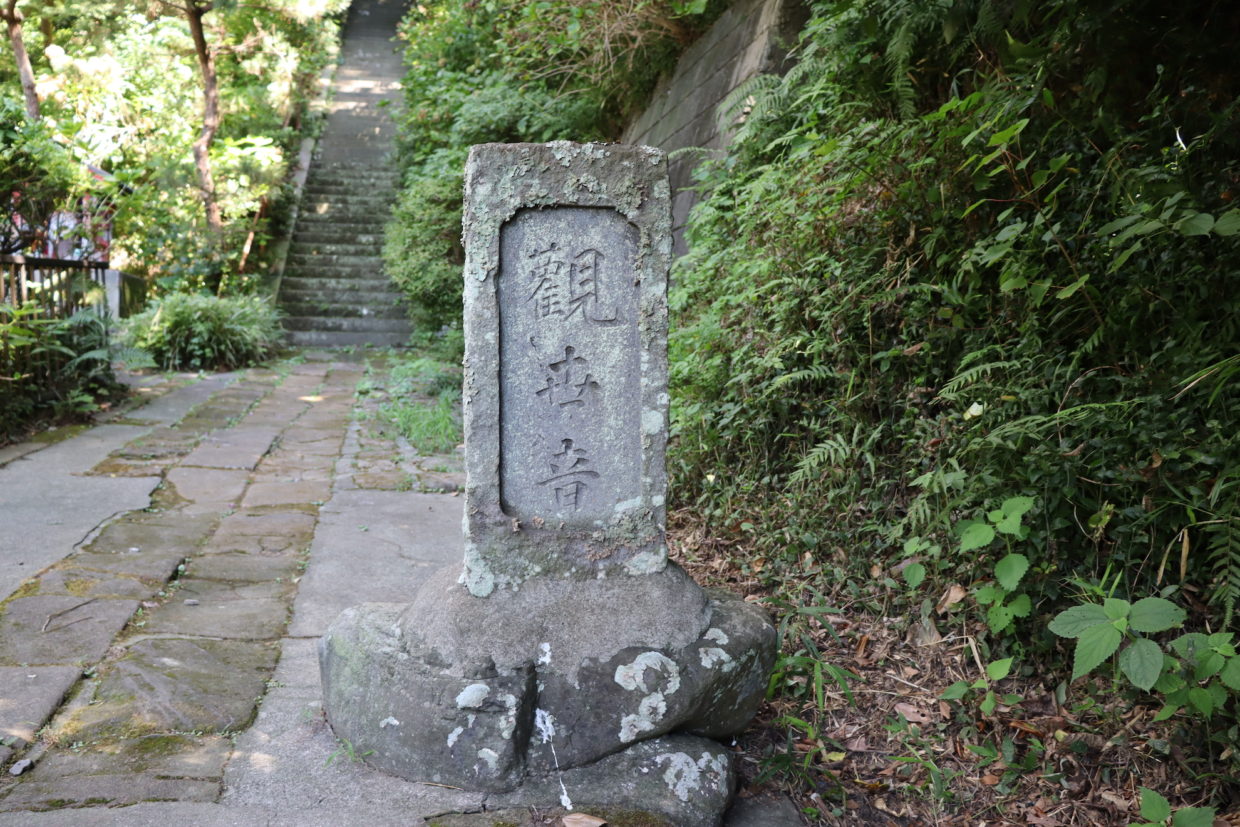
The steep stairs that appear after entering the temple area has an aura that makes visitors feel that this is a sacred ground. After climbing up the stairs, visitors will reach a temple dedicated to Kannon (the Buddhist goddess of mercy) and behind that will be the stone statue that enshrines Kannon and where Ganden-ji Temple gets its name.
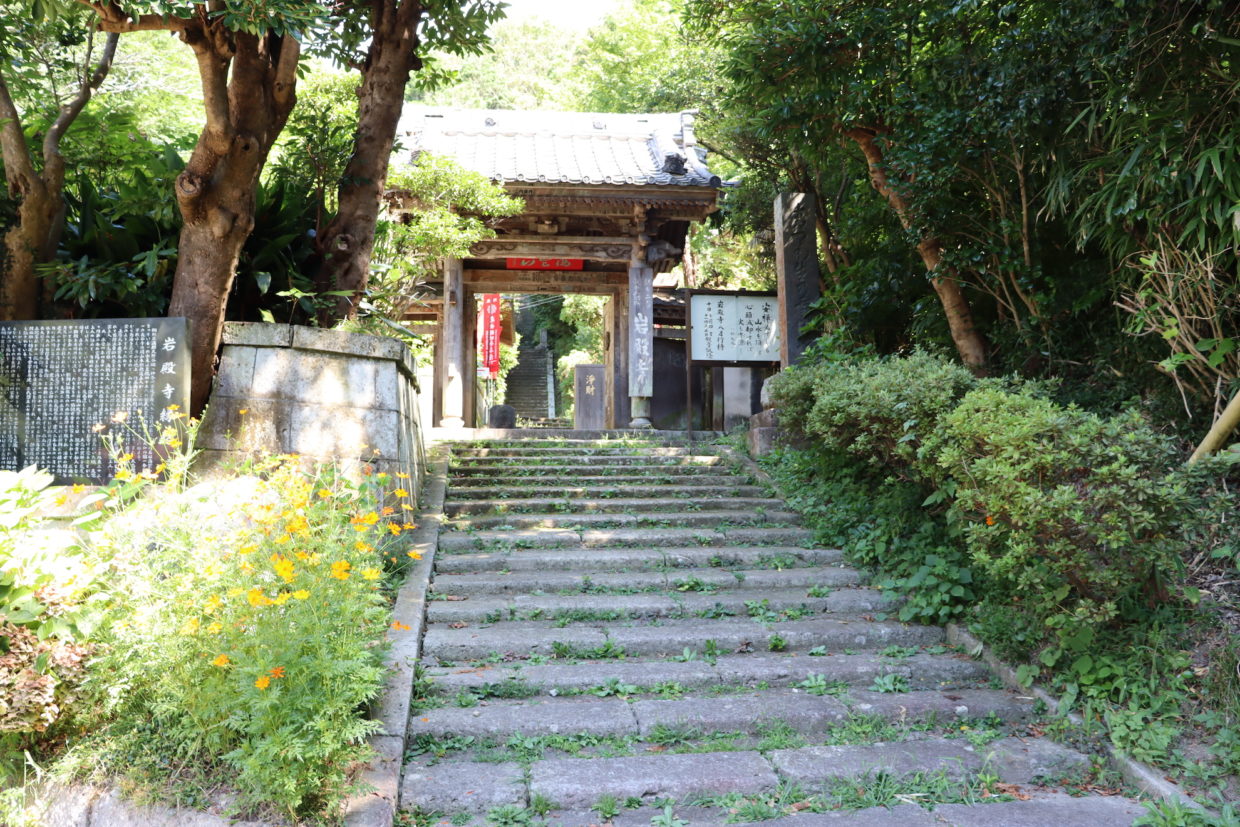
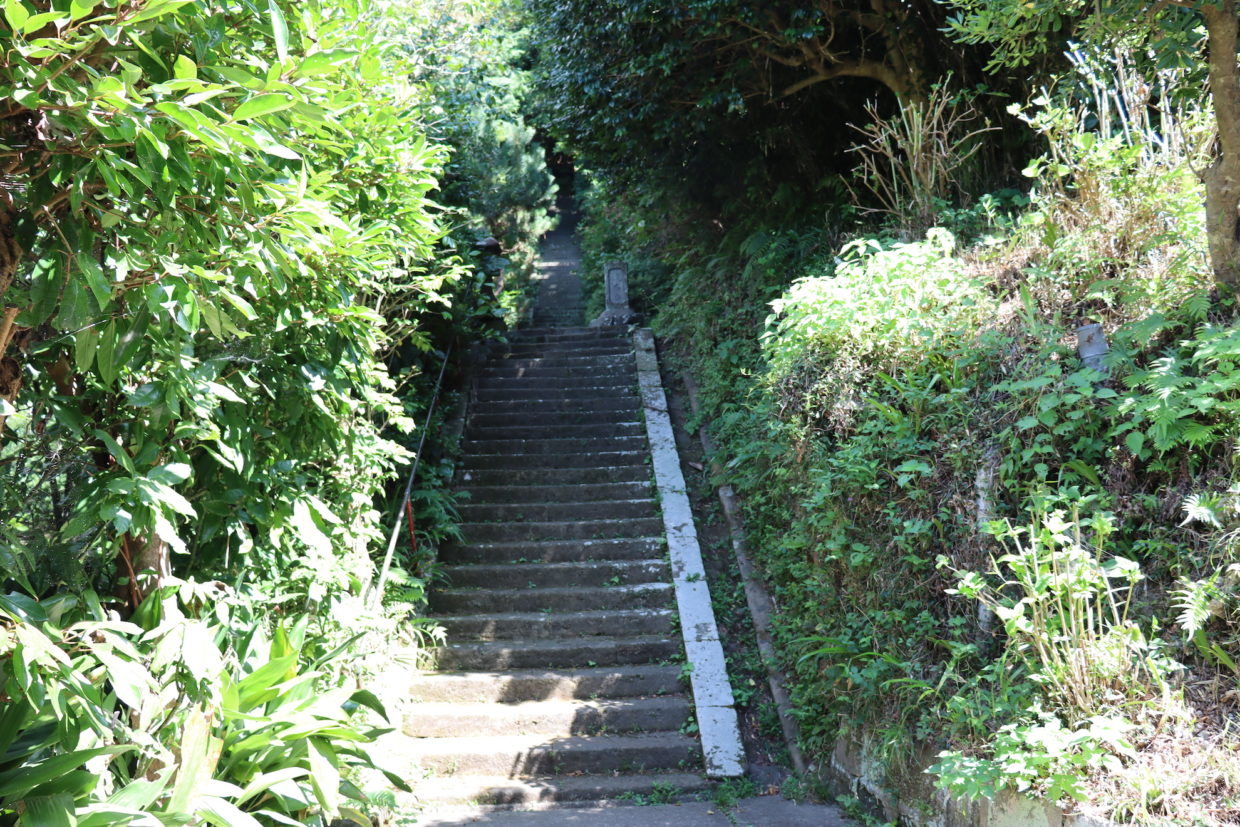


Turning back to the road that led from the temple grounds, visitors can see a cluster of houses that are surrounded by trees as well as a sea on the other side of the houses. A nice breeze can be felt blowing from between the trees.
Hosho-ji Temple and the White Monkey’s Legend
With Ganden-ji Temple to my back, I continue on walking along the Prefectural Road and after a while I come across Hosho-ji Temple’s gate entrance.
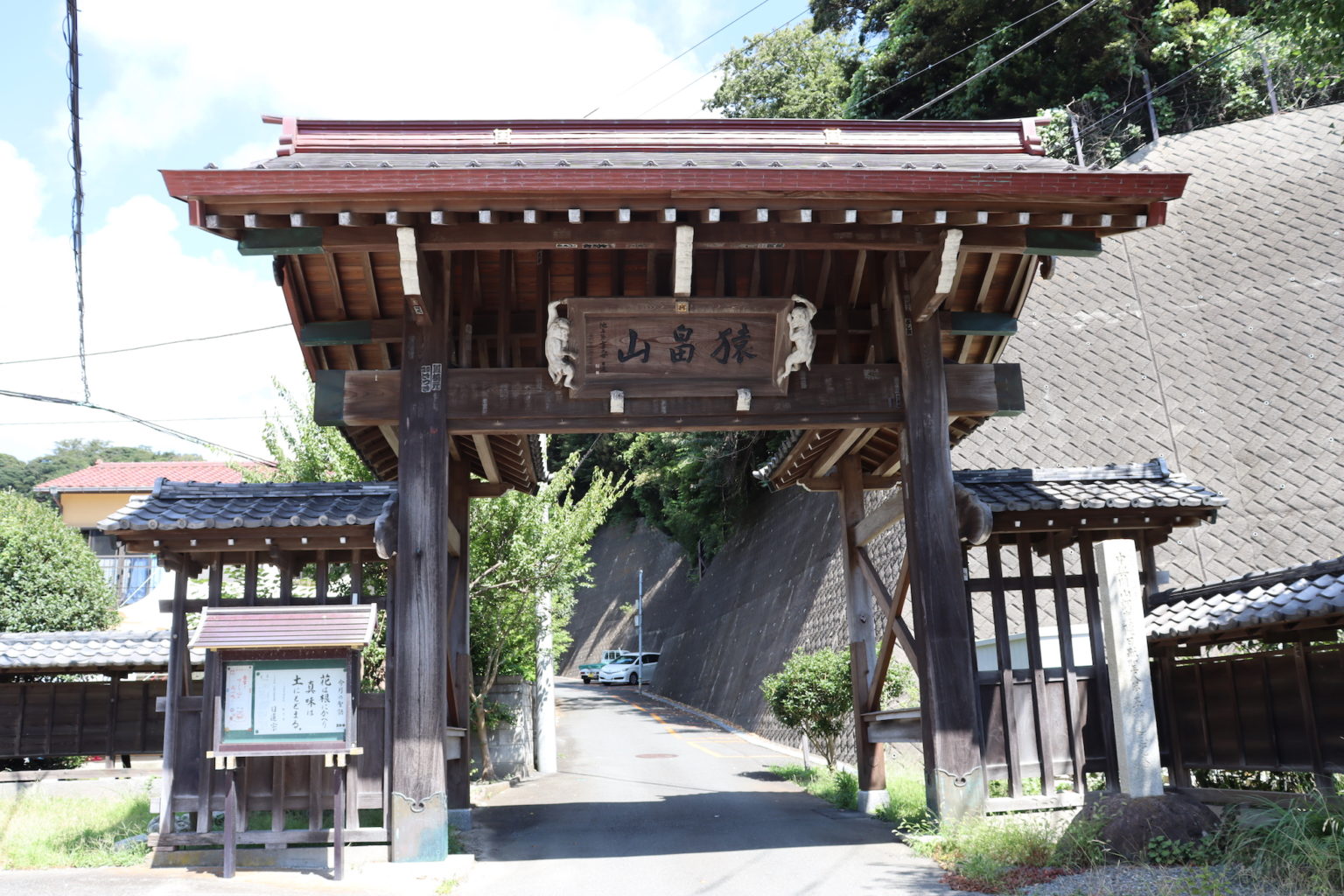
When the Sage Nichiren’s hut was set on fire, there is a legend that a white monkey brought food from fields to Nichiren, who escaped to this area by traveling across the mountains. Hosho-ji Temple was built on this land that saved Nichiren from religious persecution in the first year of the Genkou Era (1321 CE).
The official name is Enpakuzan Hosho-ji Temple (猿畠山法性寺). On the gate entrance there is a wooden plaque with two white monkeys on both sides and the word Enpakuzan (猿畠山) written on it.

Following the Nagoe Pass sign, I went up the path and the stairs on the side of the main temple and reached the inner temple. Near to the inner temple is the cavern where the Sage Nichiren, guided by the monkey, stayed when he escaped the disaster.
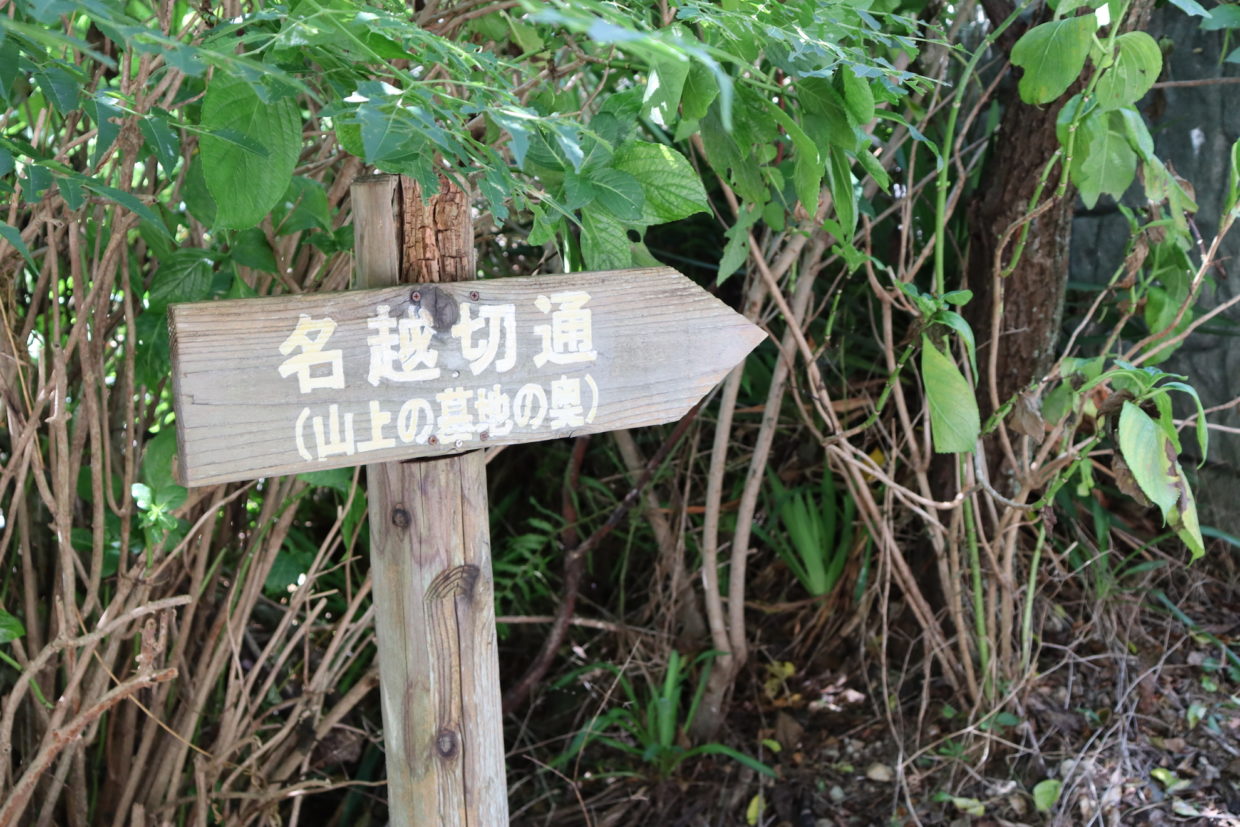
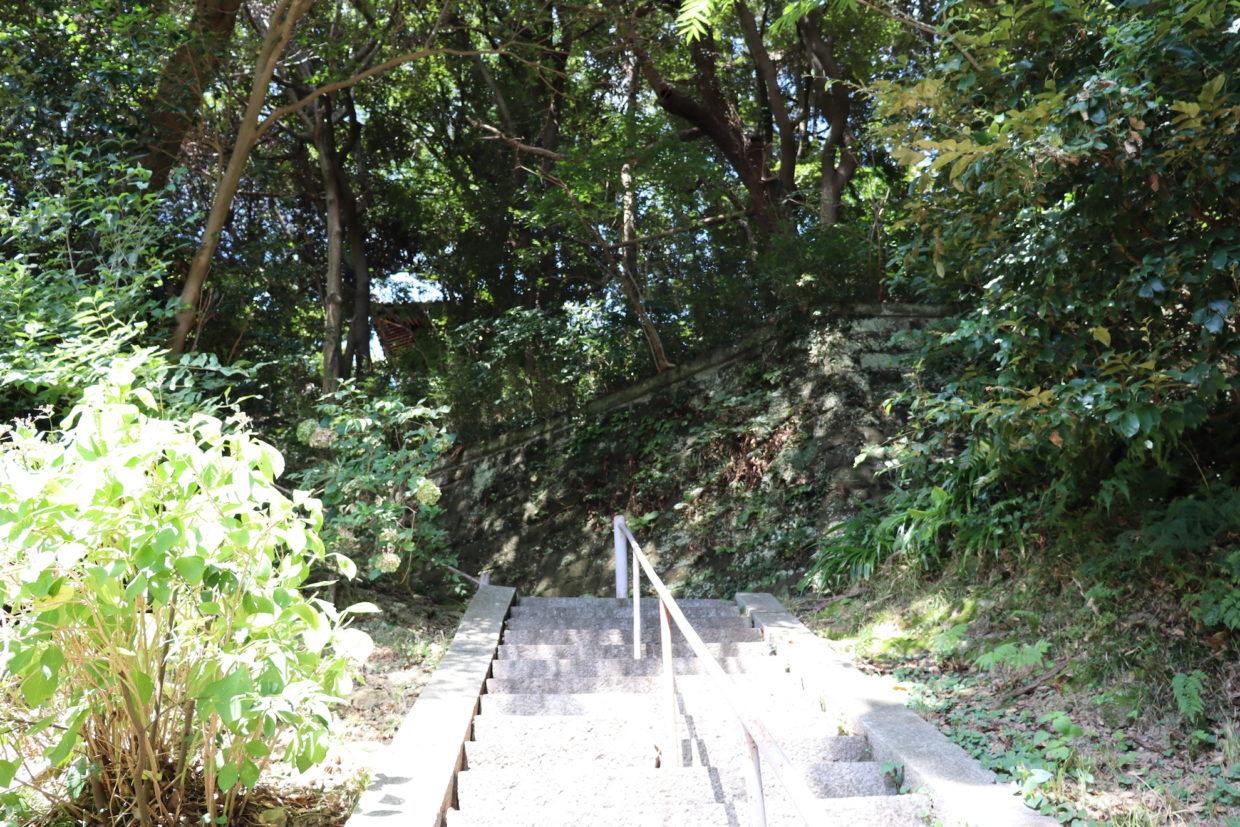
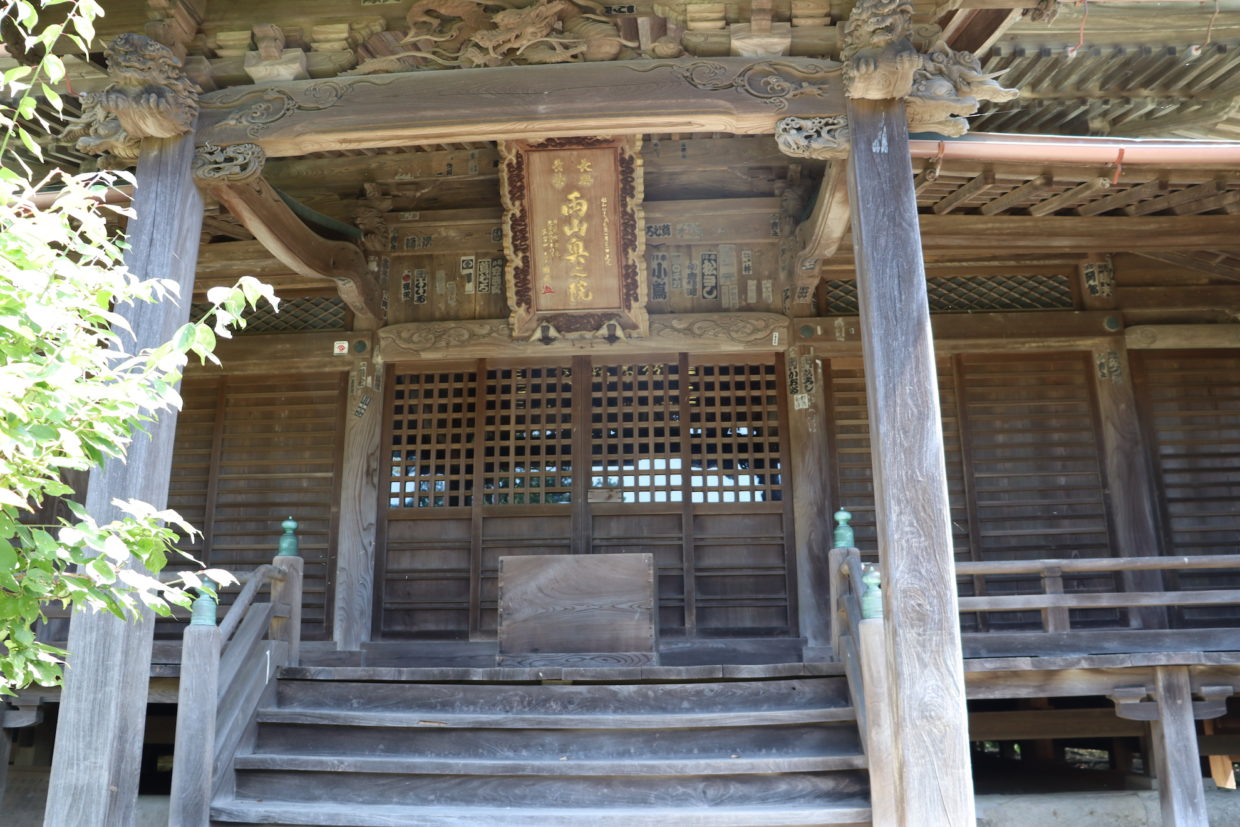
Large scale quarry remains: Long Escarpment (大切岸 okirigishi)
Behind the cemetery past the inner temple is a great steep cliff called okirigishi (a man-made escarpment).
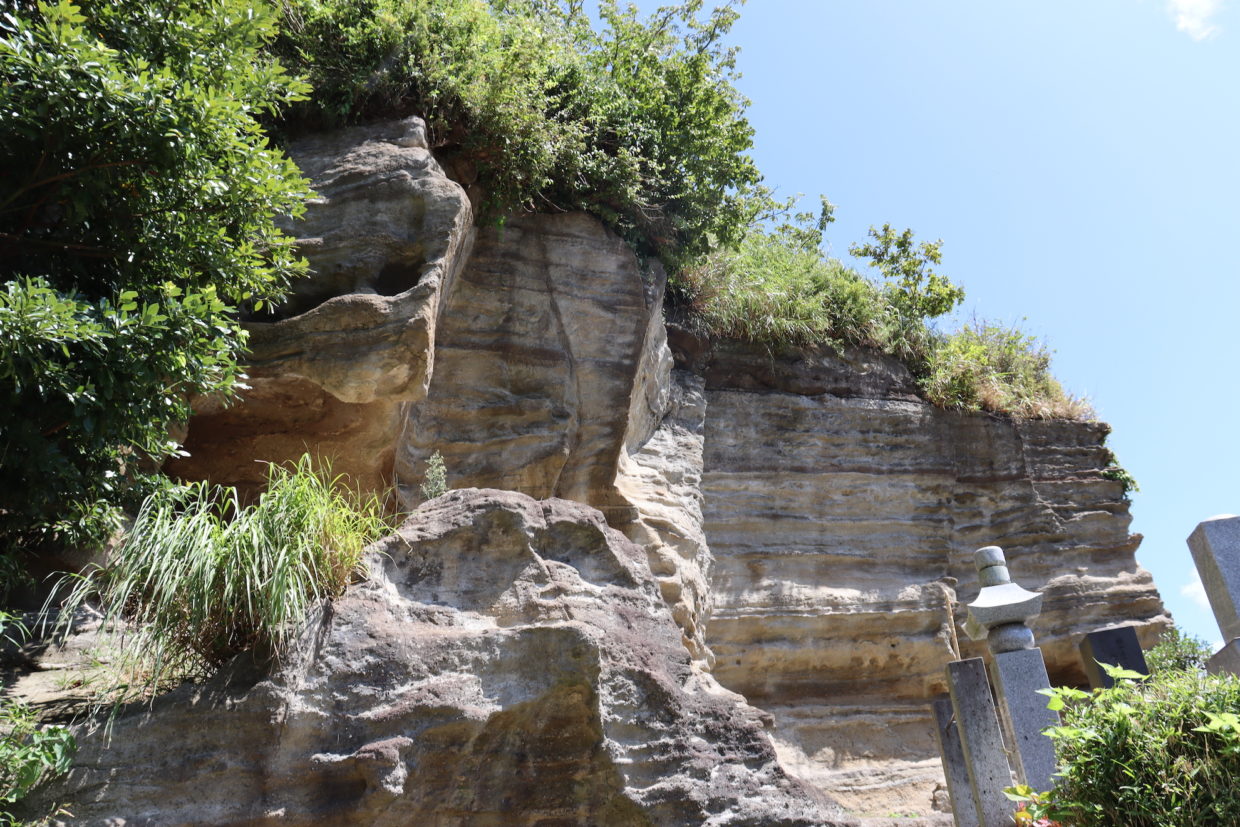
The okigirishi is the archaeological remains of a steep cliff with a height of 3-10 meters and a width of 800 meters. Recent investigations revealed that it is the remains of a large-scale 14th century quarry (a place where they cut and carry off stone slabs).
The rough rock surface is very dynamic and uneven.
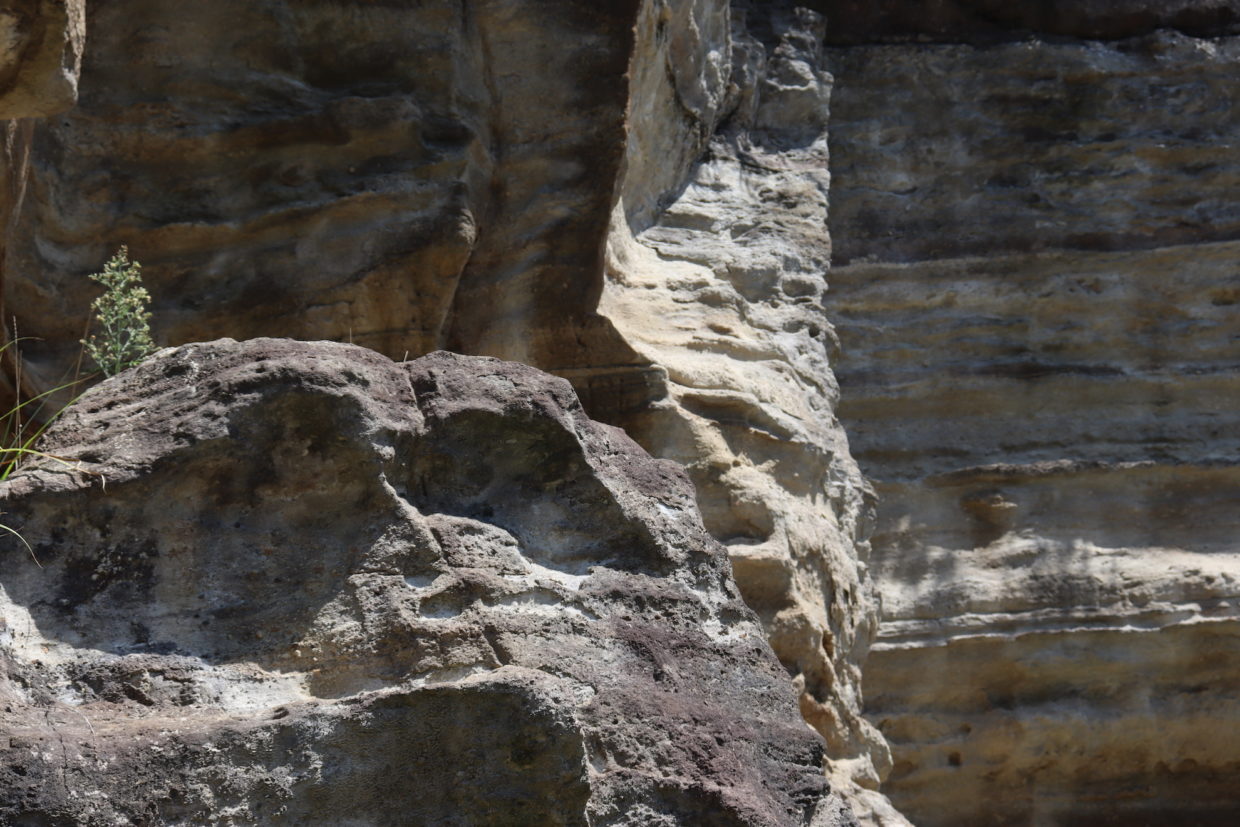
Mandarado Yagura Tombs (まんだら堂やぐら群 mandarado yagura-gun)
There is a path that continues on to Nagoe Pass on the side of the escarpment. It is a mountain road from here on out so please proceed with care.
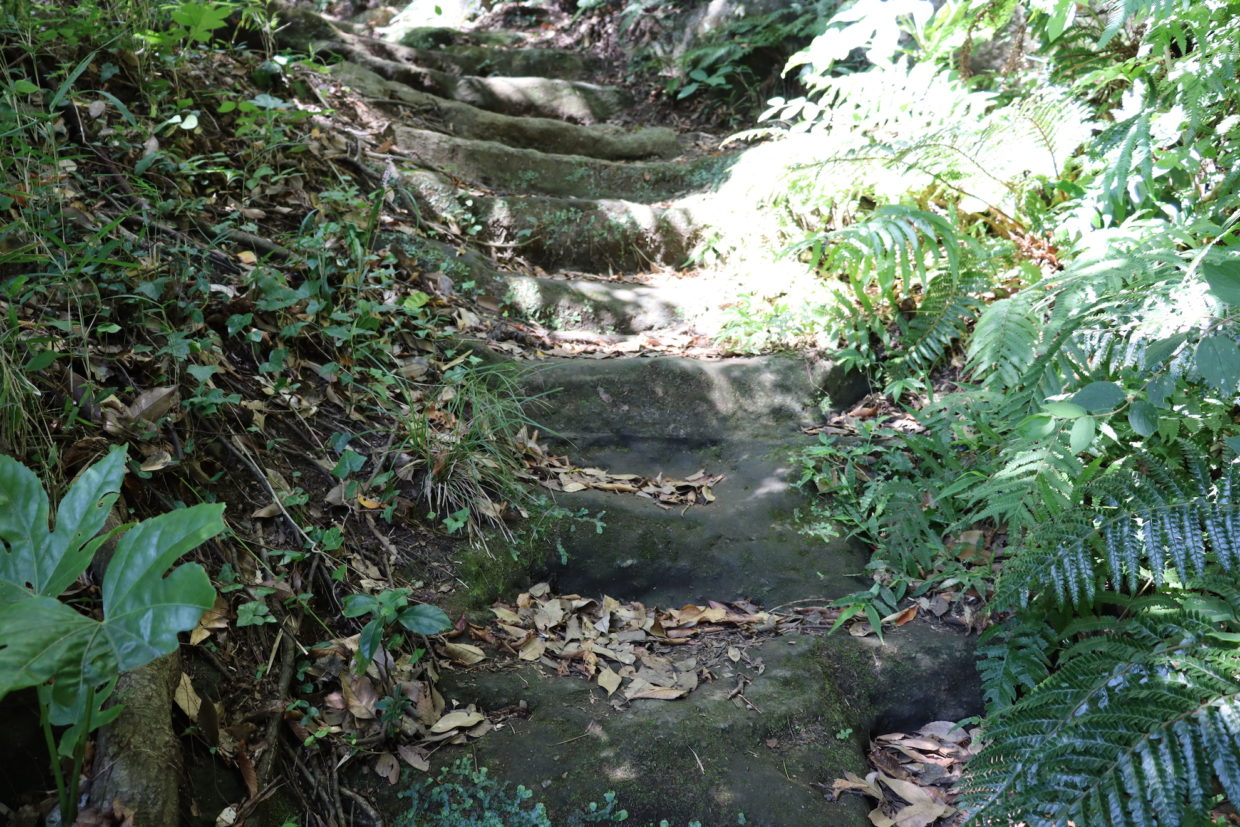

Continuing up the path, visitors will arrive at the Mandarado Yagura Tombs located in the middle of this mountain.
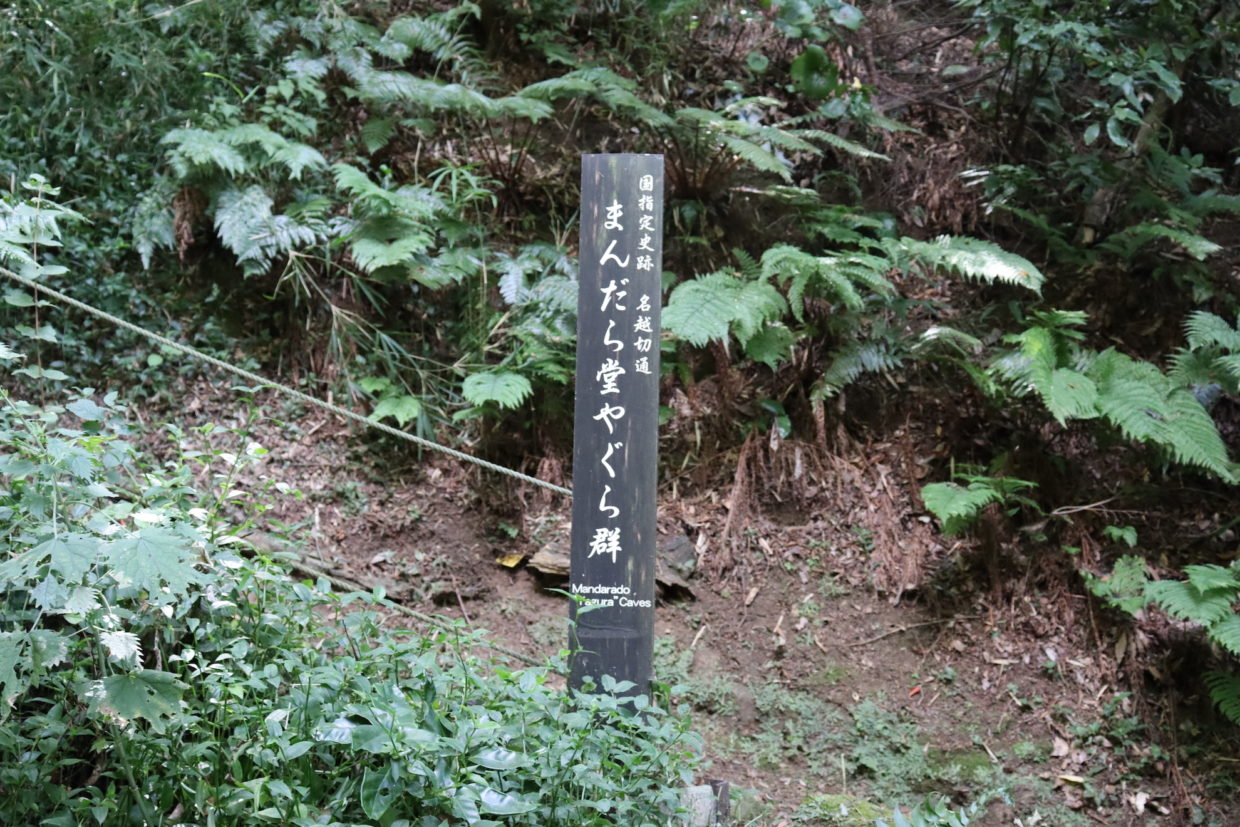
Yagura are rectangular tunnels or caves that are dug into cliffs and inside are stone monuments and such for the depositing of ashes and holding memorial services. The Mandarado Yagura Tombs is an archaeological site where the existence of more than 150 yagura were confirmed. This has become an incredibly precious landmark because, even within Kamakura city, there are not many places where this many yagura can be seen in such a good condition.
It is open to the public a limited number of times throughout the year. In 2020, the park is scheduled to be open from the end of October to the middle of December on Mondays, weekends, and holidays (about 25 days total). Please refer to Zushi City’s homepage for the detailed schedule.
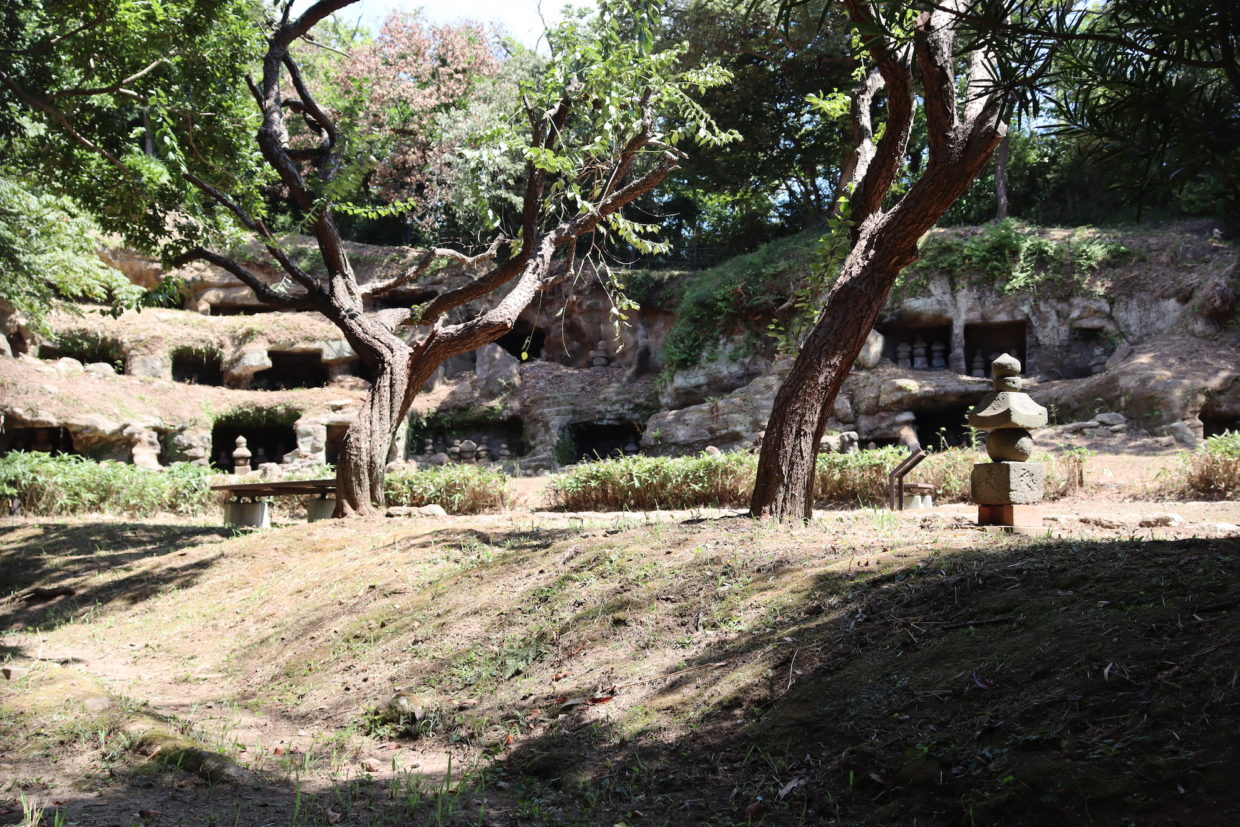
The Pass: Dynamic Bare Rock Surface
Going further on the path after the Mandarado Yagura Tombs, visitors will finally arrive at Nagoe Pass.
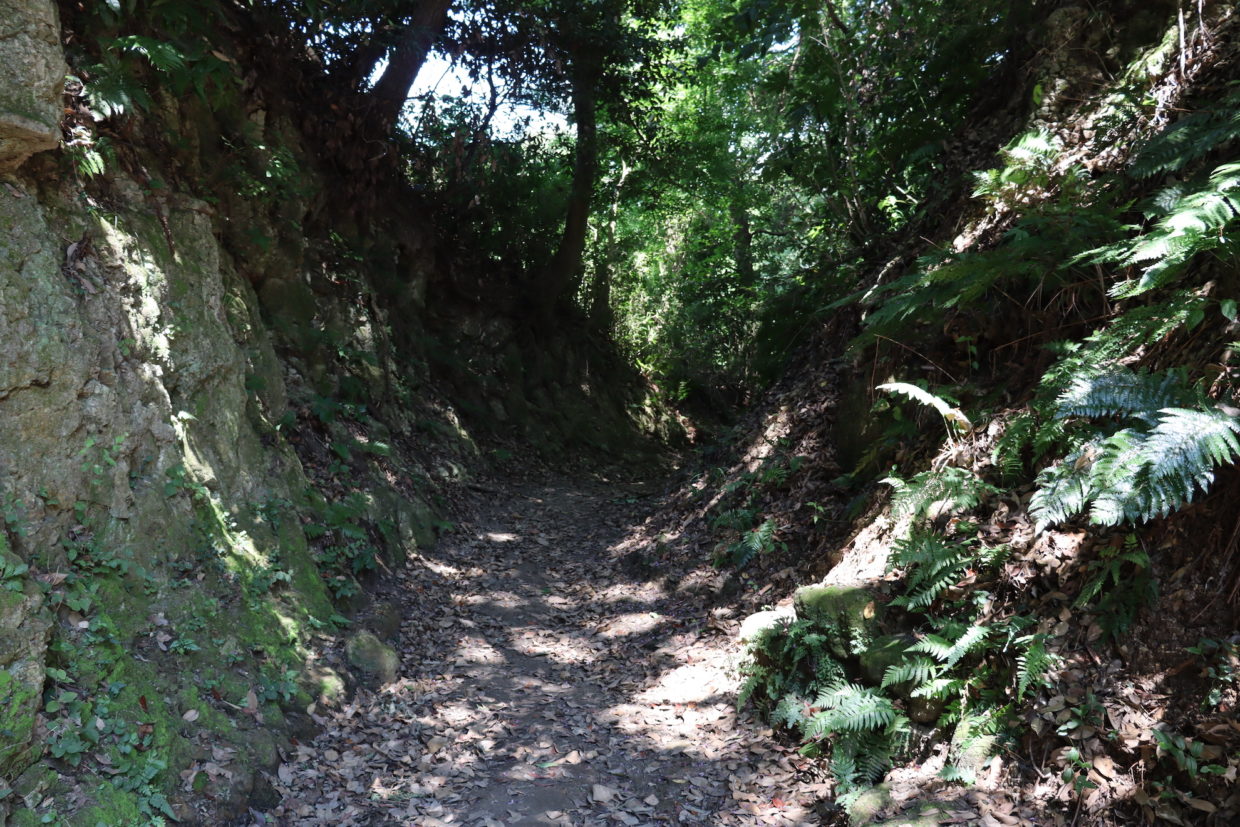

The path made by excavating the bedrock of the mountain ridge is surrounded by steep cliffs on both sides. The highest perpendicular cliff is the first road (第一切通しdai-ichi kiridoshi).
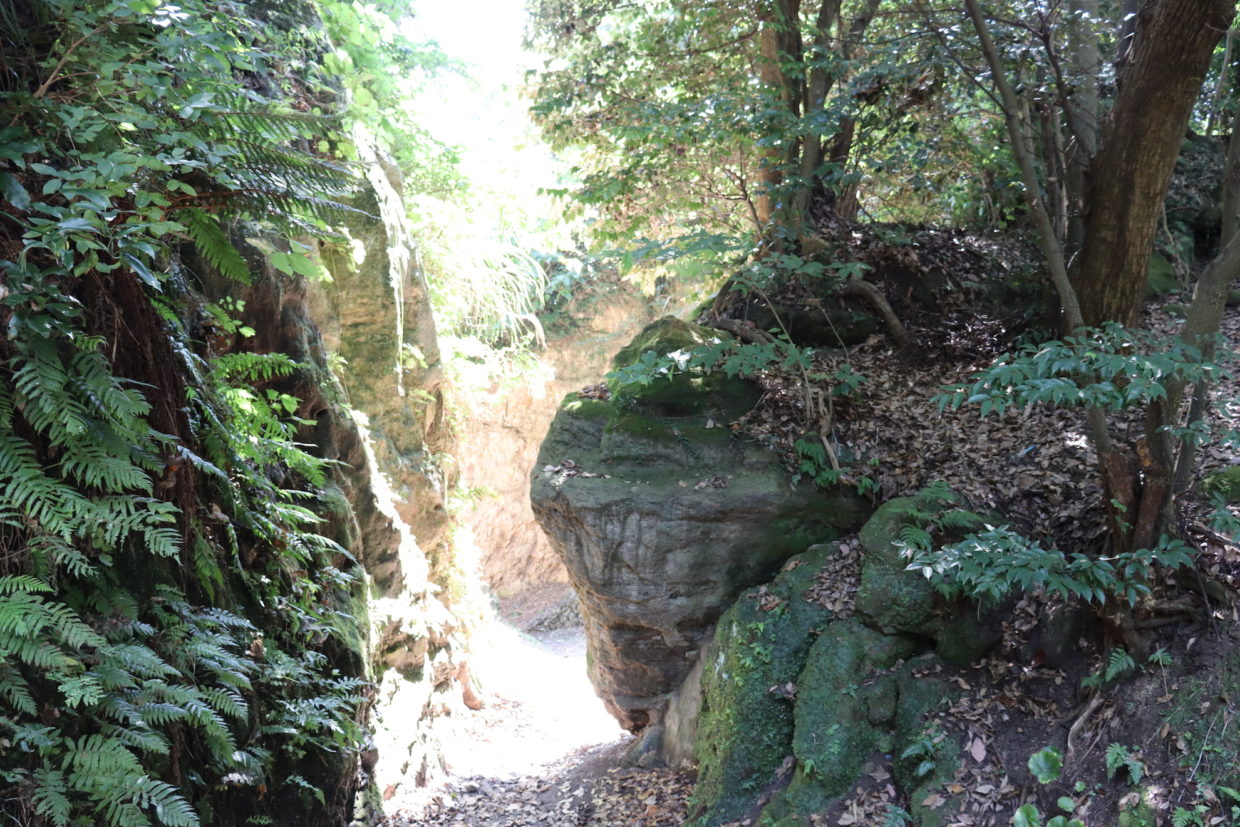
According to recent investigations, there are traces underneath the current road’s surface where the road had been repaired at least four times. Shards from earthenware that were made since the Edo Period have been excavated from the lowest layer of the road’s surface.
The current scenery is made from natural disasters such as earthquakes and the several reparations that have been conducted since the Edo Period.
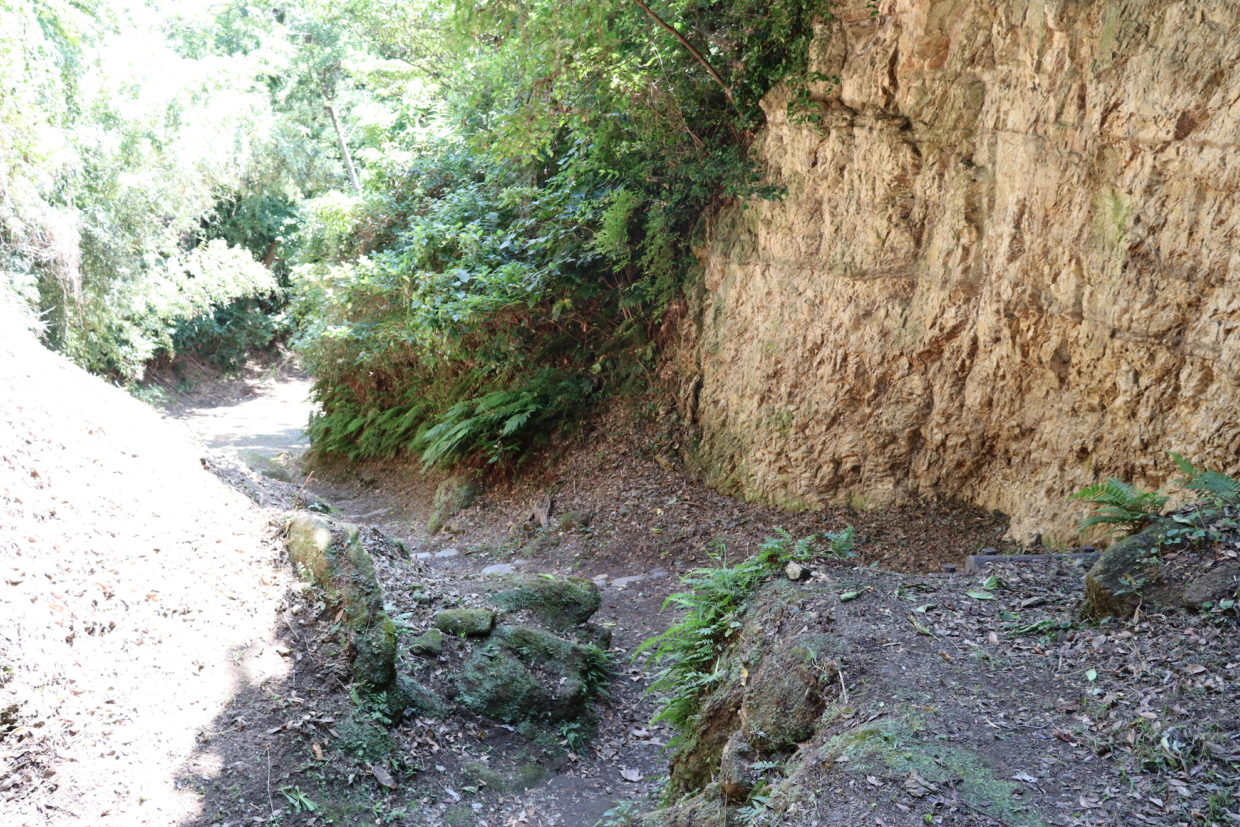
The secret corridor-like path, with bare rock tight on both sides, is a space where an otherworldly atmosphere hangs in the air. Going through while thinking about the people who previously traversed this area, I head for the exit. The residential area broadens outside such that visitors can experience a mysterious feeling of the abrupt change in times.
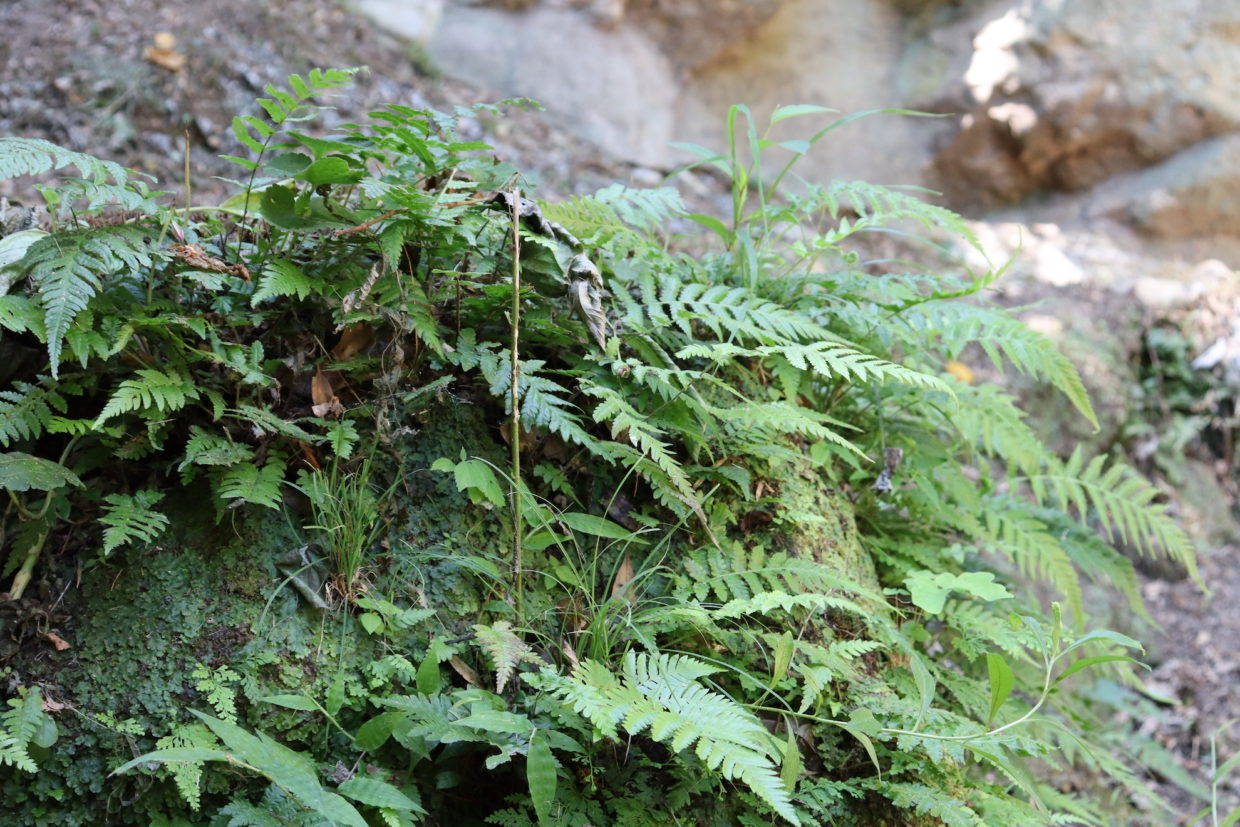
This was Nagoe Pass and the surrounding areas where visitors can experience the remnants of activities from various time periods with the five senses. Why not take the time to experience it as if it were a trip through time?
Nagoe Pass
| Address | 〒249-0008 Kotsubo, Zushi, Kanagawa Prefecture |
| Hours of Operation | Open Yearly |
| Admission Fee | Free |
| Parking Space | None |
| Website Link | https://www.city.zushi.kanagawa.jp/syokan/syakyou/newbunkazai/nagoe/nagoe.html |
Popular posts
-
 Introducing popular sightseeing spots and recommended cafes for lunch in Shichirigahama!
Introducing popular sightseeing spots and recommended cafes for lunch in Shichirigahama! -
 The Popular Tourist Destination Houkokuji Temple (Bamboo Temple) And Its Speciality
The Popular Tourist Destination Houkokuji Temple (Bamboo Temple) And Its Speciality -
 STOP HERE WHEN YOU VISIT 16 Different Guest Homes By Area
STOP HERE WHEN YOU VISIT 16 Different Guest Homes By Area -
 Enjoy a Date, a Swimming or Walking at Yuigahama! Introducing Nearby Cafes and Access!
Enjoy a Date, a Swimming or Walking at Yuigahama! Introducing Nearby Cafes and Access! -
 Visiting Kamakura - Appropriate Attire and Monthly Climate
Visiting Kamakura - Appropriate Attire and Monthly Climate
Related Articles
-
 Sweets2022.10.12The Japanese Sweets House Popular At Kamakura “Kirara” - The Recommendations and How To Go
Sweets2022.10.12The Japanese Sweets House Popular At Kamakura “Kirara” - The Recommendations and How To Go -
 Temple2022.09.30Two of Kamakura's Must-See Locations - The Kamakura Buddha and Kotoku-in
Temple2022.09.30Two of Kamakura's Must-See Locations - The Kamakura Buddha and Kotoku-in -
 Park2022.01.11Fully Enjoy the Waterfront Scene and Greenery of Meoto-ike Park
Park2022.01.11Fully Enjoy the Waterfront Scene and Greenery of Meoto-ike Park -
 Park2022.06.21Enjoy It Like A Hike - The Best Place To Enjoy The Sakura Trees - Genjiyama Park
Park2022.06.21Enjoy It Like A Hike - The Best Place To Enjoy The Sakura Trees - Genjiyama Park -
 Shrine2022.01.06Report on Tsurugaoka Hachiman-gu's Dondo-Yaki (Sagicho)
Shrine2022.01.06Report on Tsurugaoka Hachiman-gu's Dondo-Yaki (Sagicho) -
 Restaurant2023.03.04If you are going to eat udon or soba at Kamakura stop by Minemoto
Restaurant2023.03.04If you are going to eat udon or soba at Kamakura stop by Minemoto
